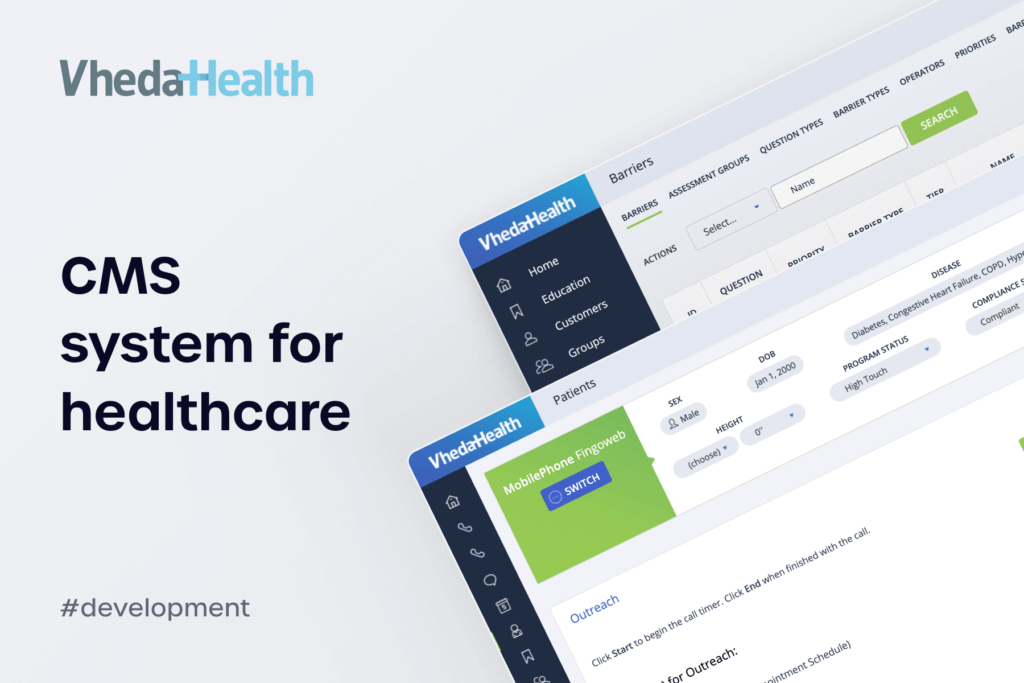Every developer, at some point in their career, encounters legacy code – that mysterious, tangled part of a system that “just works,” yet no one dares to touch. Often written years ago, by someone long gone from the team, legacy code can feel like a ticking time bomb hidden beneath layers of patches and quick fixes. But it’s also the backbone of countless successful products – systems that have evolved, scaled, and adapted over time. In fact, nearly 80% of enterprises report that technical debt and legacy systems have caused project delays, cancellations, or rising costs, underscoring how widespread the challenge truly is.
In this article, we’ll demystify what legacy code truly is, explore why it’s so common in software development, and, most importantly, discuss effective strategies for dealing with it. Whether you’re maintaining an old PHP application, integrating outdated APIs, or refactoring a massive monolith, understanding how to approach legacy code can turn frustration into an opportunity for improvement and innovation.
What is legacy code?
Legacy code refers to code that has been inherited from previous developers or systems, often lacking modern programming practices and documentation. Despite its drawbacks, understanding legacy code is crucial for organizations seeking to improve their software infrastructure through legacy software modernization.
Definition and common misconceptions
Legacy code typically refers to code that is difficult to maintain or update, often due to its age, the absence of up-to-date documentation, or reliance on outdated technologies. A common misconception is that any old code is considered legacy; however, it is more about the context in which the code operates and its impact on current development needs.
Some of the most frequent misconceptions include:
- “Legacy code means old code.”
While age is often a factor, even relatively new code can become legacy if it lacks proper documentation, automated tests, or maintainable architecture. Legacy status depends more on maintainability than on how long the code has existed. - “If it works, it’s not legacy.”
Functionality alone doesn’t define code quality. A system can perform its tasks perfectly while still being a nightmare to modify, extend, or debug — all signs of legacy code. - “Legacy code should always be replaced.”
In many cases, refactoring or gradual modernization is more cost-effective and less risky than a complete rewrite. The goal isn’t to discard everything old, but to balance business needs with technical debt reduction. - “Only outdated technologies produce legacy codebase.”
Even modern frameworks and tools can result in legacy systems if development practices are poor or if knowledge transfer within the team is missing.
How legacy code is created?
Legacy code is often the result of natural software evolution rather than poor programming alone. As business requirements change, features are added on top of old ones, leading to complex dependencies and inconsistent architecture. When teams rush to meet deadlines, short-term fixes may take priority over sustainable design, introducing technical debt that compounds over time. Changes in the technology stack – such as moving from on-premise infrastructure to the cloud – can also render parts of the original system obsolete. Moreover, when key developers leave without proper knowledge transfer, the remaining team may lose a deep understanding of the codebase, making future maintenance difficult.
Over time, these factors combine to turn once functional, well-written software into what is now considered legacy codebase. It can also emerge when testing and documentation are neglected, leaving future developers without guidance. Ultimately, legacy code is not always a sign of failure – it’s often a byproduct of growth and constant change in dynamic business environments.
Why legacy code still matters?
Legacy code remains an essential part of many organizations’ digital infrastructure. While it may seem outdated or inefficient, it often supports critical business processes that cannot simply be replaced overnight. Instead of viewing it purely as a burden, companies should recognize the value it represents - both in terms of functionality and the lessons it offers for future development.
Here are five reasons why legacy code still matters:
- It powers essential business operations that keep core systems running smoothly every day.
- It preserves valuable business logic built over years of refinement and real-world experience.
- It provides proven stability and reliability that newer systems may not yet achieve.
- It supports complex integrations that connect departments, tools, and external partners.
- It reflects a significant financial investment that cannot be easily replaced without risk.
Legacy code also becomes a serious obstacle during ERP modernization, since outdated architecture and poor documentation make it difficult to integrate new modules or automate business processes.

Challenges of working with legacy code
Working with legacy code presents several challenges that can hinder software development processes. Technical debt, lack of documentation, and security risks create a complex landscape for organizations dealing with legacy systems.
Technical debt and maintainability issues
One of the greatest challenges posed by legacy code is the accumulation of technical debt, which occurs when quick fixes or suboptimal coding practices are prioritized over long-term solutions. This debt builds up silently over time, reducing flexibility and increasing the overall cost of change. As systems age, maintaining and expanding them becomes more difficult, slowing down innovation and making modernization efforts riskier and more expensive.
Some of the most common maintainability issues:
- Poor or missing documentation – without clear explanations, developers waste time understanding how the system works before making even small changes.
- Lack of automated tests – the absence of proper testing increases the risk of introducing new bugs when modifying existing code.
- Outdated dependencies and libraries – older components may no longer be supported, leading to security vulnerabilities and compatibility issues.
- Spaghetti code structure – tightly coupled modules and unclear architecture make the codebase fragile and difficult to extend.
- Knowledge gaps within the team – when original developers leave, the remaining team may struggle to maintain unfamiliar or overly complex code.
Ultimately, technical debt in legacy codebase is not just a technical problem - it’s a business challenge that directly impacts scalability, performance, and long-term growth.
Lack of documentation and testing
Many legacy systems suffer from inadequate documentation, leaving developers uncertain about the original structure and intent of the code. Without proper guidance, even simple updates can become time-consuming and risky. The lack of clear documentation often forces teams to rely on trial and error, increasing the likelihood of mistakes.
This issue is further compounded by limited or non-existent testing coverage. Without reliable tests, developers cannot confidently verify that their changes won’t break existing functionality. As a result, maintaining legacy code becomes a slow, error-prone process that discourages innovation and continuous improvement.
Security and compatibility risks
Legacy code can expose organizations to significant security vulnerabilities, particularly when outdated libraries or frameworks are no longer supported. These weaknesses make systems prime targets for attacks and data breaches. Additionally, older code may not follow current security best practices, increasing organizational risk.
As technology environments evolve, legacy systems can face compatibility issues with new platforms, software, or devices. Integrations may fail or behave unpredictably, limiting the system’s usefulness and efficiency. Consequently, managing legacy codebase requires careful attention to both security updates and ongoing compatibility with modern technologies.

How to deal with legacy code effectively?
Dealing with legacy code requires a focused approach that includes careful analysis, incremental changes, and strategic thinking. By understanding these key strategies, organizations can navigate the complexities of legacy systems and drive effective modernization efforts.
Start with code analysis and documentation
he first step in managing the code is conducting a thorough analysis to identify problem areas and dependencies within the codebase. Establishing detailed documentation during this process helps provide a clearer picture for current and future developers, thus facilitating better understanding and collaboration.
Key actions in code analysis and documentation include:
- Performing static code analysis – examine the codebase for complexity, duplicated logic, and potential error-prone areas.
- Mapping dependencies – identify modules, libraries, and external integrations that the system relies on.
- Documenting architecture and workflows – create diagrams and written explanations of how different components interact.
- Recording business logic and rules – capture essential processes and decision-making criteria embedded in the code.
- Maintaining a knowledge repository – store documentation in a central, accessible location for current and future team members.


Refactor step by step, not all at once
Instead of attempting a complete overhaul of the entire codebase, organizations should prioritize incremental refactoring. Implementing changes one step at a time helps minimize disruption, allowing developers to test and verify each part of the legacy code as improvements are made slowly.
Here’s a step-by-step approach to incremental refactoring:
- Identify high-risk or frequently changed areas – focus on parts of the code that cause the most issues or are critical to business operations.
- Write tests before making changes – ensure existing functionality is protected and future modifications can be verified.
- Refactor small, manageable modules – update one function, class, or component at a time to reduce complexity.
- Integrate and verify after each change – run automated tests and manual checks to confirm stability.
- Document all changes – record improvements, decisions, and new patterns to maintain clarity for the team.
This step-by-step strategy ensures that code is modernized safely while maintaining operational stability.
When to rewrite instead of refactor?
A complete rewrite may be warranted when the legacy code is so outdated or convoluted that incremental refactoring cannot bring it to a maintainable state. This situation often arises when the system relies on unsupported technologies, has accumulated excessive technical debt, or suffers from a highly tangled architecture. Rewriting can also be justified if the code no longer meets current business requirements or performance standards.
Before deciding to start from scratch, it is crucial to analyze the costs, risks, and expected benefits of a full replacement. Organizations should consider the time and resources required, potential disruptions to ongoing operations, and the learning curve for developers working with a completely new system. In some cases, a hybrid approach - rewriting only critical components while refactoring the rest - can balance risk and efficiency. Clear planning and staged implementation are essential to prevent creating new legacy code during the rewrite. Ultimately, the decision to rewrite versus refactor should prioritize long-term maintainability, scalability, and alignment with business goals.
We dive deeper into this topic in our article: How to modernize legacy systems?

FAQ - Legacy code
What makes code “legacy” in the first place?
Code is often classified as legacy when it is no longer supported, has not kept pace with technology advancements, or has components that complicate development and maintenance. It is less about the age of the code and more about its usability in current development paradigms.
Is legacy code always bad?
Legacy codebase isn’t always a liability - in many cases, it continues to deliver real value to organizations.
- It often contains proven business logic that has been refined through years of real-world use.
- It can provide stability and reliability, especially in systems where downtime is not an option.
- It serves as a foundation for modernization, allowing teams to build new features without starting entirely from scratch.
How do you test legacy code with no documentation?
Testing legacy code without documentation requires employing techniques such as exploratory testing to understand code behavior and using tools for automated testing to create new test cases. Engaging with developers who have previously worked on the code can also provide insights and assist in generating test scripts.
Teams should start by identifying the most critical functionalities and focus their initial tests there to ensure business continuity. Over time, the insights gained through testing can help rebuild missing documentation and improve overall code quality.
How long does it take to modernize a legacy system?
The duration for legacy app modernization highly depends on the complexity of the legacy code, the current architecture, and the resources available for the task. Organizations can expect timelines to vary significantly from weeks to years, emphasizing the importance of a carefully planned strategy for successful legacy software modernization.







